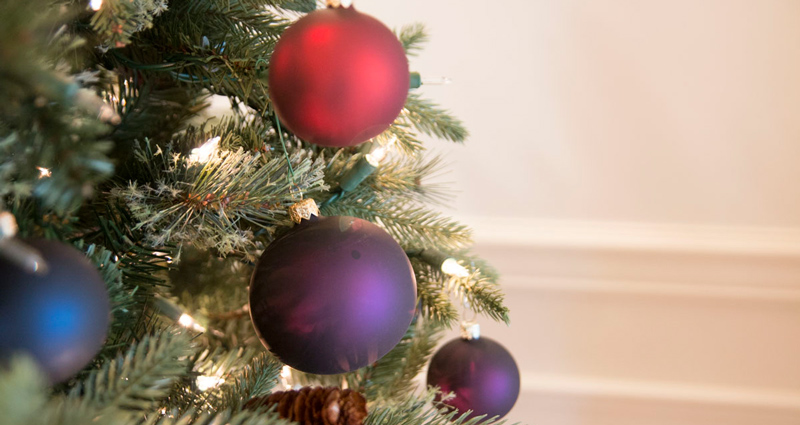
That green tree bedecked with lights and ornaments and topped with a star has become an important part of the season celebrating Christ’s birth.
But how did it become such a beloved tradition? There certainly wasn’t a decorated tree in the stable of Bethlehem that long-ago night. In fact, even the birth of Jesus wasn’t celebrated by early Christians. In those days, the custom was to honor a saint’s death, or his birth into eternal life, and so Jesus’ death on Good Friday and his resurrection on Easter were the focal points.
The celebration of His birth didn’t begin to spread in the Christian world until after 300 AD, but it took much longer for the Christmas tree to appear on the scene and grow in popularity. The story of how it came into being is a combination of many different facts, legends and customs.
Several interesting stories explain the origins of the tree, but it took over 1,000 years after 300 AD before the first known, decorated Christmas tree appeared.
One of the earliest tales centers on St. Boniface, an English missionary who served in Germany in the eighth century. Attempting to end the worship of the oak, a symbol of a pagan god, St. Boniface chopped down an oak and showed the people an evergreen growing in the center of it.
He told the people that the evergreen, with its branches pointing to heaven, was a holy tree, the tree of the Christ Child, and symbolized His promise of eternal life. The missionary instructed the villagers to carry the evergreen from the wilderness into their homes and surround it with gifts as symbols of love and kindness.
Another story stems from the popularity of medieval mystery plays in 11th century Europe. The Paradise Play, which told the story of Adam and Eve, incorporated an evergreen tree decorated with apples.
The Paradise Tree, as it was known, evolved into the European custom of placing a fir tree in the home at Christmas and decorating it with apples and small white wafers representing the holy Eucharist. The wafers were later replaced by little pieces of pastry cut in the shapes of stars, angels, hearts, flowers and bells. Eventually, customs from Germany led to the Star of Bethlehem being placed at the top.
It wasn’t until 1510, however, that the first record of a decorated Christmas tree appeared.
In that year, men of the local merchants’ guild in Riga, Latvia, covered a tree with artificial roses as a symbol of Mary. Placed in the market center, the men celebrated with song and dance and then set the tree aflame. It is said that the burning Christmas tree represents Jesus as the light of the world.
By the end of the 1500s, Christmas trees were common in Germany, and settlers carried the tradition to England and eventually America.
Early on, several religions resisted the Christmas tree and other customs because they associated it with pagan rituals. The Puritans banned it in the mid-1600s, but by the 1800s it had become quite fashionable.
In America, the first Christmas tree was placed in the White House by President Franklin Pierce in 1853. In those days, they were about 4 feet tall and set on tabletops.
As the evergreen grew in popularity, several new traditions emerged, such as using lighted candles as decorations and the creation of the first glass ornaments.
The tree has become firmly rooted in Christian symbolism. Pope St. John Paul II said the Christmas tree is “an ancient custom that exalts the value of life,” because the evergreen remains unchanged through the harshness of winter. He did stress, however, that the most important symbol of the season is the Christmas crèche.
Christian symbolism
- The wide base of the tree angles upward to a pointed top, which directs attention to heaven.
- The evergreen branches represent eternity.
- The lights represent the image of Jesus as the light of the world.
Blessing ritual
According to the U.S. Bishops (usccb.org), the Christmas tree may be blessed during Advent, on Christmas Eve, or on Christmas Day. In the home, the tree may be blessed by a family member. The blessing is followed by the lighting of the tree.

